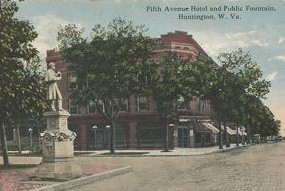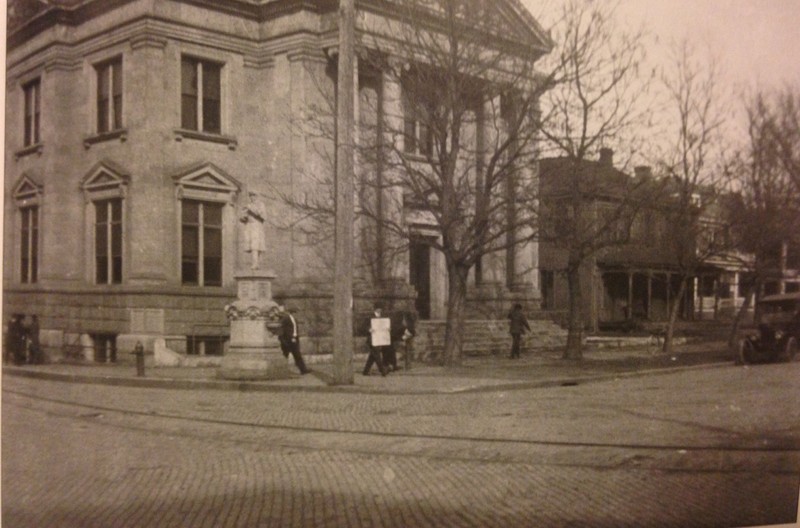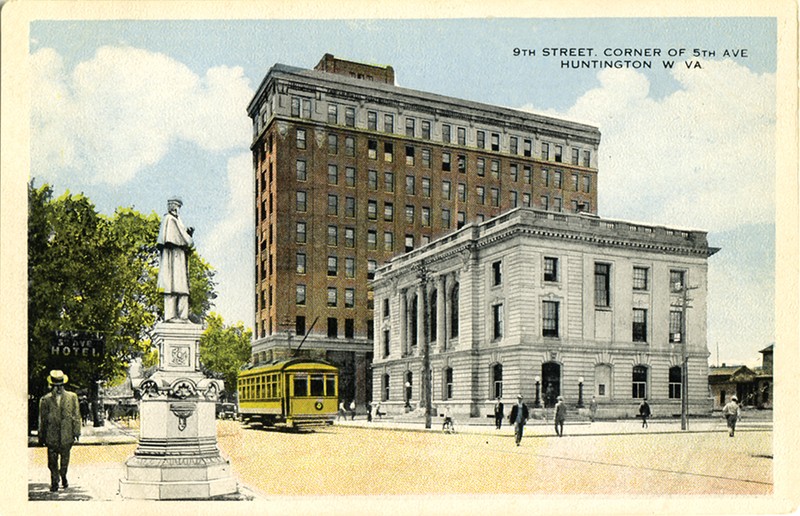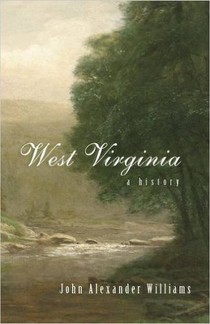The Lost Union Statue (1915)
Introduction
Text-to-speech Audio
Images
This image shows the Union statue, as well as a hotel that was once located across the street.

The lost statue in front of Carnegie Public Library

Postcard, dating between 1905 and 1915, showing the lost statue at left

Want to know more about West Virginia history? Click the link below to learn about this book from WVU Press.

Backstory and Context
Text-to-speech Audio
There is relatively little information about the cast iron statue of a Union soldier that once stood at this location. Newspaper sources indicate that the statue was erected in the 1890s, likely by members of the Grand Army of the Republic.
In 1915, a group of residents with Southern affinities announced their intention to erect a statue of a Confederate soldier in the city's Ritter Park. The group hoped to win support for their plan among residents--most of whom observed a tradition of silence about the memory of a war that had divided residents throughout the region--by "balancing" the park's interpretation by moving the statue of the Union soldier to Ritter Park as well. This plan upset many residents who hoped to avoid controversy, especially those who remembered the actions of Confederate raiders and were proud of the state's allegiance to the Union. From the perspective of these residents, erecting a statue of a Confederate soldier "would be discreditable to the Union cause."
As locals debated the issue, a number of conflicts erupted. The ensuing controversy came to a head when residents woke up to find that the Union statue had disappeared. Some residents reported that they had seen men loading the statue on a wagon, but did not report the occurrence because they assumed that the men were moving the statue to Ritter Park. To this day, no one knows the fate of that Union soldier.
Several other Union monuments disappeared throughout the state. As a result, there are more Confederate monuments in the state than there are monuments honoring the majority of West Virginians who supported the Union. Because West Virginia was created in opposition to secession, the creation of pro-Confederate monuments in the early 20th century and the simultaneous destruction of Union memorials illustrates how historical interpretations are often contentious.
Cite This Entry
Marshall University et. al. "The Lost Union Statue (1915)." Clio: Your Guide to History. July 23, 2020. Accessed April 29, 2025. https://theclio.com/tour/1596/225
Sources
Jacob Casto, Lost Huntington: The missing statue http://www.herald-dispatch.com/specialsections/losthuntington/x1313366295/Lost-Huntington-The-missin... accessed 3/1/2016
West Virginia in the Civil War, West Virgina Archives and History, http://www.wvculture.org/history/archives/wvcivilwar.html accessed 5/11/2016
https://huntingtonquarterly.com/2018/09/26/issue-66-postcards-from-our-past/

